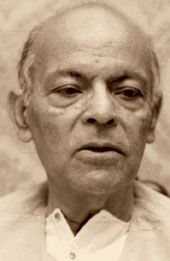 |
| Nisith Ranjan Ray |
The administration has done precious little to protect our fast-disappearing built heritage, but the word “heritage” itself is bandied about by everybody today. Part of the credit for turning heritage into an everyday word goes to Nisith Ranjan Ray, historian and former curator of the Victoria Memorial Hall.
Calcutta’s barefoot historian P.T. Nair and Amalendu De, former head of the history department at Jadavpur University, stressed this at the launch of Ray’s year-long centenary celebrations last week. The event was organised by the Society for Preservation, Calcutta.
Nair said Ray’s awareness of the city’s beleaguered built heritage increased after the dismantling of the Senate Hall of Calcutta University. So, initially Ray wrote the text to go with artist Rathin Mitra’s sketches of heritage buildings and sites. Nair continued the series.
Nair said Ray was primarily a teacher. Once he sought Nair’s opinion on a thesis on Calcutta by a student. Ray became wild when Nair opined that it was “rubbish.” Ray’s argument was that the student had spent five precious years on it. If her thesis was bad, the fault was the supervisor’s and not hers, Nair recalled.
Since the celebration was held at Sarat Sadan, Nair reminded the gathering that 200 of the popular Bengali novelist’s manuscripts, part of the Asutosh collection, were available at National Library.
Ray was appointed curator of the Victoria Memorial Hall in 1971, and in 1979-89, when there was a proposal to demolish Town Hall, his ideas about conservation crystallised with the formation of the Society for Preservation, Calcutta.
Arun Bandopadhyay, the Nurul Hasan professor of history at Calcutta University, said his teacher, Ray, was committed to studying the history of the urbanisation of Calcutta and was responsible for reprinting Bengal Past & Present. He was close to all his students and used his organisational skills to promote the study of history without being aggressive.











